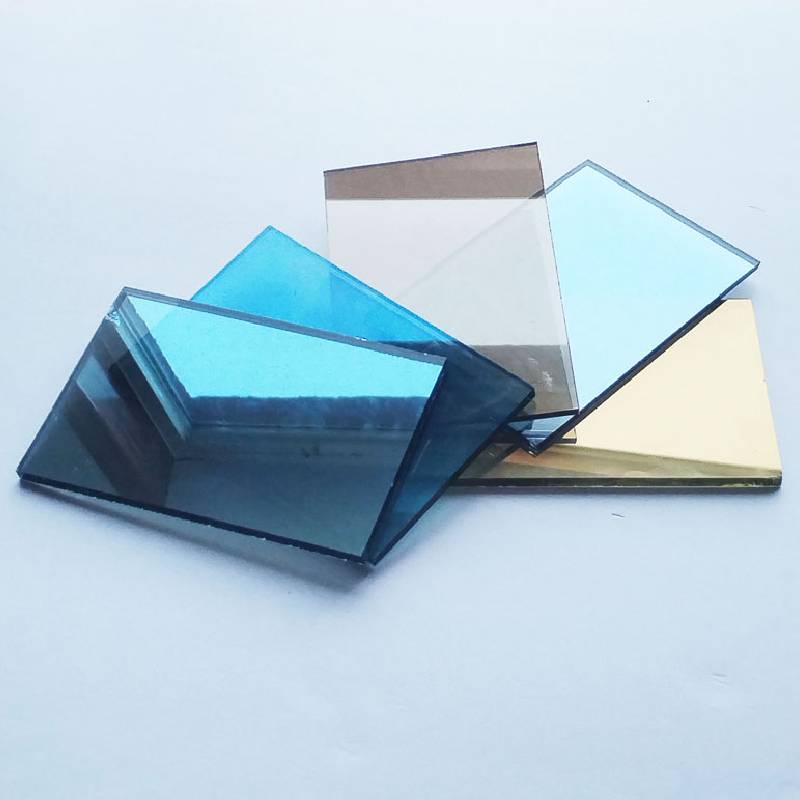The Float Glass Process A Revolutionary Method in Glass Production
The float glass process, developed in the mid-20th century, has revolutionized the way flat glass is produced. This innovative method allows for the manufacturing of high-quality glass sheets that are essential in various applications, from architecture to automotive industries. Understanding the intricacies of the float glass process provides insight into why it remains the preferred technique for producing flat glass.
At the heart of the float glass process is the principle of buoyancy
. The process begins with the careful selection and mixing of high-purity raw materials, primarily silica sand, soda ash, and limestone. These materials are melted together in a furnace at temperatures exceeding 1,600 degrees Celsius, forming a molten glass. This initial stage is critical, as the quality of the raw materials directly influences the properties and clarity of the final product.
Once the glass is molten, it is poured onto a bed of molten tin in a specially designed float bath. The tin serves as a medium that allows the glass to spread evenly, creating a smooth, flat surface. The process relies on the low interfacial tension between glass and tin, which facilitates the formation of a uniform thickness without the need for mechanical flattening. This floating action eliminates the need for additional polishing or grinding, significantly reducing production costs while enhancing product quality.
float glass process
As the glass moves through the float bath, it begins to cool gradually. This controlled cooling is essential for achieving the desired thickness and optical clarity. The thickness of the glass can be adjusted by altering the flow and speed at which the glass is introduced into the float bath. This flexibility allows manufacturers to produce a wide range of glass thicknesses, catering to diverse market needs.
After the glass exits the float bath, it undergoes a series of cooling stages, eventually leading to the annealing lehr. In this stage, the glass is reheated and then slowly cooled to relieve internal stresses, ensuring durability and safety. Once fully cooled, the glass sheets can be cut, packaged, and shipped to various industries, including construction, automotive, and electronics.
The float glass process has significantly improved the efficiency and quality of flat glass production. Its ability to create large, flawless sheets of glass with minimal defects has made it a cornerstone of modern manufacturing. Moreover, advancements in technology continue to enhance the process, allowing for even greater precision and customization.
In conclusion, the float glass process is a sophisticated and efficient method of producing flat glass that has stood the test of time. With ongoing innovations and growing applications, it remains an integral part of the glass industry, setting the standard for quality and efficiency in glass production.
 Afrikaans
Afrikaans  Albanian
Albanian  Amharic
Amharic  Arabic
Arabic  Armenian
Armenian  Azerbaijani
Azerbaijani  Basque
Basque  Belarusian
Belarusian  Bengali
Bengali  Bosnian
Bosnian  Bulgarian
Bulgarian  Catalan
Catalan  Cebuano
Cebuano  Corsican
Corsican  Croatian
Croatian  Czech
Czech  Danish
Danish  Dutch
Dutch  English
English  Esperanto
Esperanto  Estonian
Estonian  Finnish
Finnish  French
French  Frisian
Frisian  Galician
Galician  Georgian
Georgian  German
German  Greek
Greek  Gujarati
Gujarati  Haitian Creole
Haitian Creole  hausa
hausa  hawaiian
hawaiian  Hebrew
Hebrew  Hindi
Hindi  Miao
Miao  Hungarian
Hungarian  Icelandic
Icelandic  igbo
igbo  Indonesian
Indonesian  irish
irish  Italian
Italian  Japanese
Japanese  Javanese
Javanese  Kannada
Kannada  kazakh
kazakh  Khmer
Khmer  Rwandese
Rwandese  Korean
Korean  Kurdish
Kurdish  Kyrgyz
Kyrgyz  Lao
Lao  Latin
Latin  Latvian
Latvian  Lithuanian
Lithuanian  Luxembourgish
Luxembourgish  Macedonian
Macedonian  Malgashi
Malgashi  Malay
Malay  Malayalam
Malayalam  Maltese
Maltese  Maori
Maori  Marathi
Marathi  Mongolian
Mongolian  Myanmar
Myanmar  Nepali
Nepali  Norwegian
Norwegian  Norwegian
Norwegian  Occitan
Occitan  Pashto
Pashto  Persian
Persian  Polish
Polish  Portuguese
Portuguese  Punjabi
Punjabi  Romanian
Romanian  Russian
Russian  Samoan
Samoan  Scottish Gaelic
Scottish Gaelic  Serbian
Serbian  Sesotho
Sesotho  Shona
Shona  Sindhi
Sindhi  Sinhala
Sinhala  Slovak
Slovak  Slovenian
Slovenian  Somali
Somali  Spanish
Spanish  Sundanese
Sundanese  Swahili
Swahili  Swedish
Swedish  Tagalog
Tagalog  Tajik
Tajik  Tamil
Tamil  Tatar
Tatar  Telugu
Telugu  Thai
Thai  Turkish
Turkish  Turkmen
Turkmen  Ukrainian
Ukrainian  Urdu
Urdu  Uighur
Uighur  Uzbek
Uzbek  Vietnamese
Vietnamese  Welsh
Welsh  Bantu
Bantu  Yiddish
Yiddish  Yoruba
Yoruba  Zulu
Zulu 

